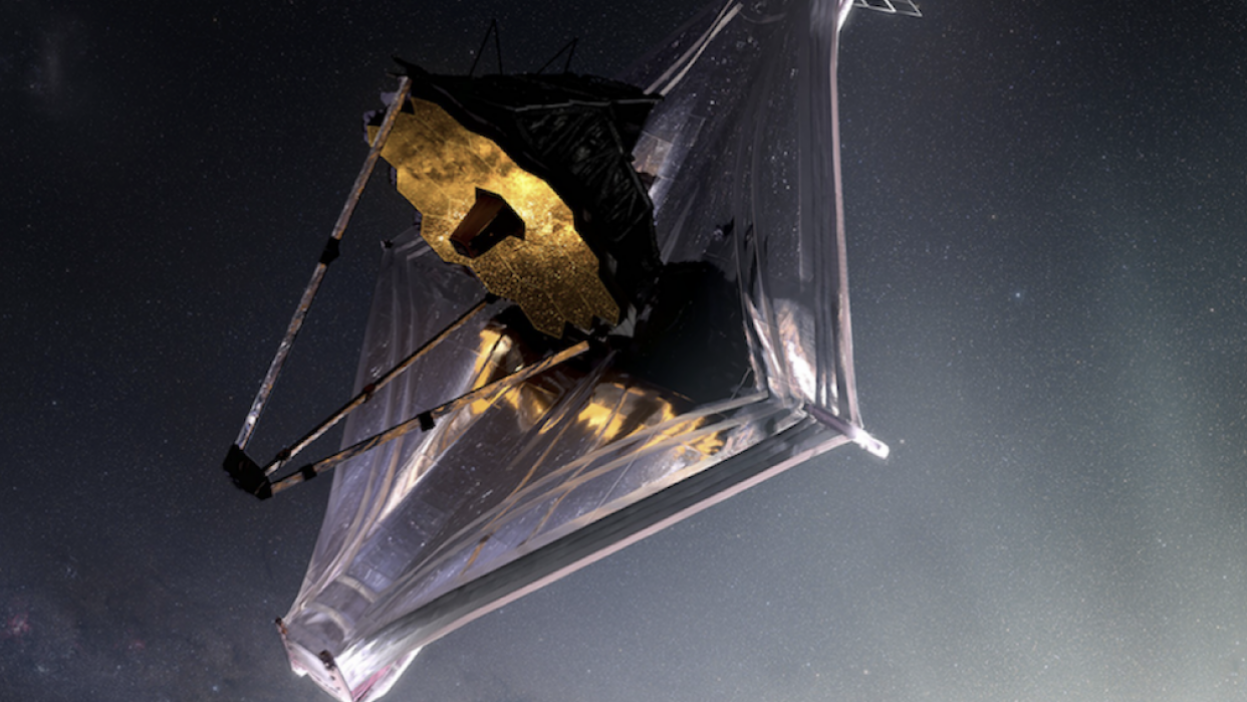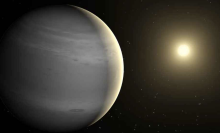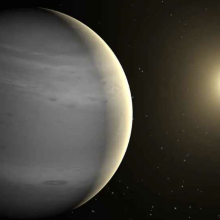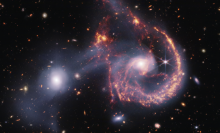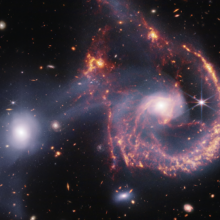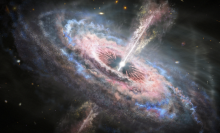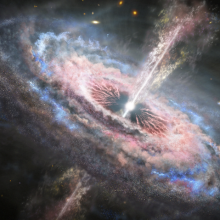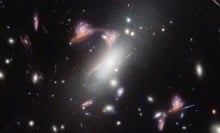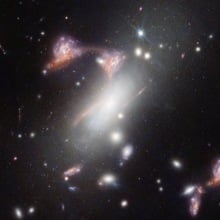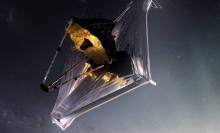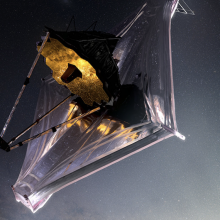The James Webb Space Telescope's latest psychedelic view reveals an exploded star.
But this supernova is special. That's because, from our perch in the galaxy, the new stellar blast appears three times in a warped line — like it's floating in front of a funhouse mirror. This distorting effect happens because objects in space can be so massive — often clusters of galaxies — that they warp the cosmos, like a bowling ball sitting on a mattress. This creates a curved "cosmic lens," bending and distorting light, while also magnifying and brightening the light.
"The lens, consisting of a cluster of galaxies that is situated between the supernova and us, bends the supernova’s light into multiple images," Brenda Frye, an astronomer from the University of Arizona who helped undertake the new research, said in a statement.
Though, she added, in the case of this supernova, a "trifold mirror" is even better suited to describe this triple view. "This is similar to how a trifold vanity mirror presents three different images of a person sitting in front of it," Frye said.
Crucially, the mirror effect is of great value to astronomers. They can use the differences in light from the distant supernova to help measure the long-sought expansion of the universe (yes, the sprawling universe is constantly expanding).
"To achieve three images, the light traveled along three different paths," Frye explained. "Since each path had a different length, and light traveled at the same speed, the supernova was imaged in this Webb observation at three different times during its explosion. In the trifold mirror analogy, a time-delay ensued in which the right-hand mirror depicted a person lifting a comb, the left-hand mirror showed hair being combed, and the middle mirror displayed the person putting down the comb."
The three circles below show the supernova, dubbed "H0pe" — H0 is short for the "Hubble constant," the name for the rate of the universe's expansion. The vivid, white, fuzzy objects are the galaxies in the foreground creating the lens, located some 3.6 billion light-years away.
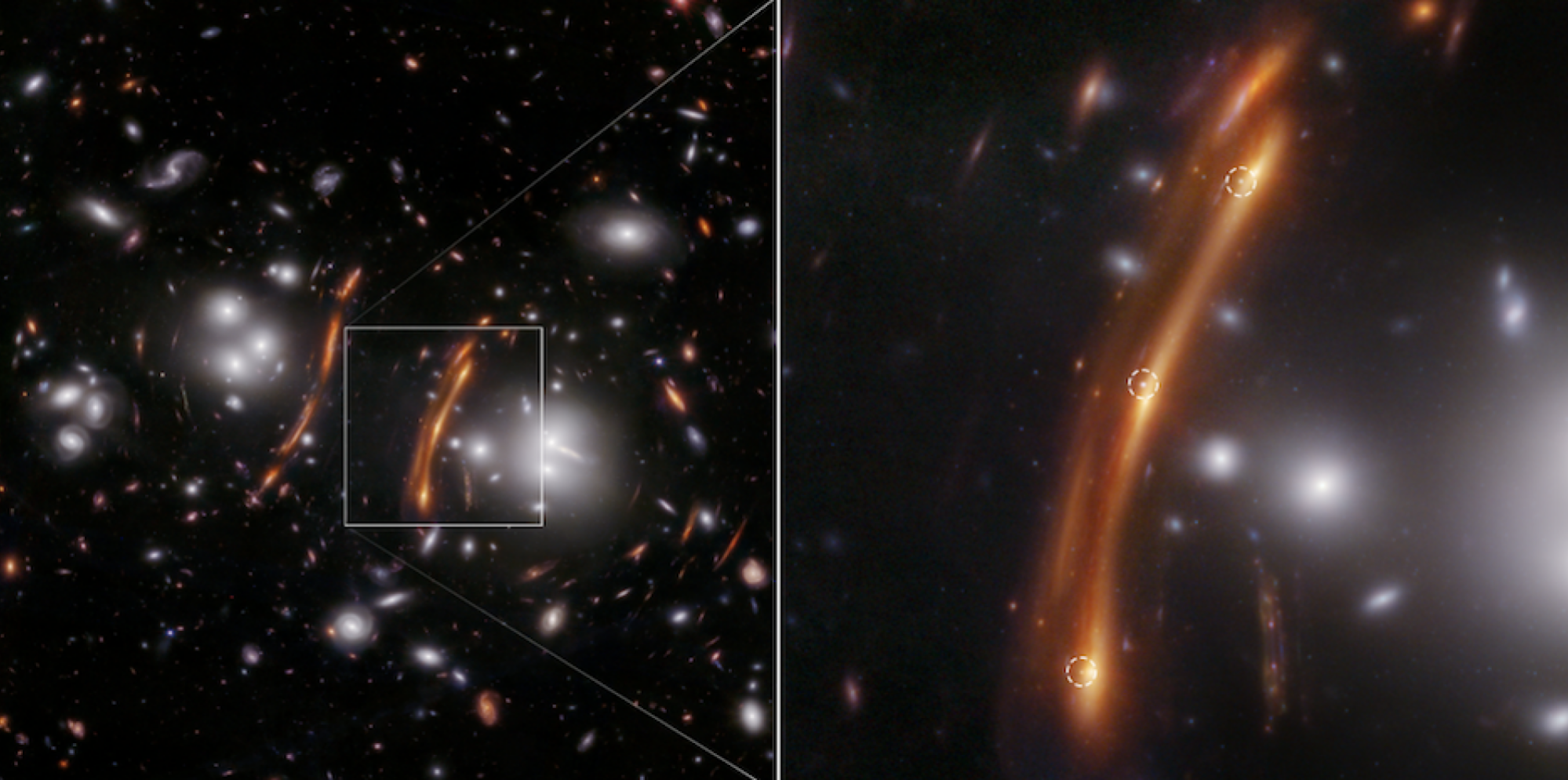
Tweet may have been deleted
The universe's rate of expansion is an ongoing area of research, with different methods employed to narrow down an answer. In this case, the light measurements Frye and the team recorded from supernova H0pe show an expansion of 75.4 kilometers per second per megaparsec, with an uncertainty range of plus 8.1 or minus 5.5 parsecs. These are big numbers. For reference, a parsec equals 3.26 light-years, and a single light-year is nearly 6 trillion miles.
Don't let your head explode.
The Webb telescope's powerful abilities
The Webb telescope — a scientific collaboration between NASA, ESA, and the Canadian Space Agency — is designed to peer into the deepest cosmos and reveal new insights about the early universe. But it's also examining intriguing planets in our galaxy, along with the planets and moons in our solar system.
Here's how Webb is achieving unparalleled feats, and likely will for decades to come:
- Giant mirror: Webb's mirror, which captures light, is over 21 feet across. That's over two-and-a-half times larger than the Hubble Space Telescope's mirror. Capturing more light allows Webb to see more distant, ancient objects. The telescope is peering at stars and galaxies that formed over 13 billion years ago, just a few hundred million years after the Big Bang. "We're going to see the very first stars and galaxies that ever formed," Jean Creighton, an astronomer and the director of the Manfred Olson Planetarium at the University of Wisconsin–Milwaukee, told Mashable in 2021.
- Infrared view: Unlike Hubble, which largely views light that's visible to us, Webb is primarily an infrared telescope, meaning it views light in the infrared spectrum. This allows us to see far more of the universe. Infrared has longer wavelengths than visible light, so the light waves more efficiently slip through cosmic clouds; the light doesn't as often collide with and get scattered by these densely packed particles. Ultimately, Webb's infrared eyesight can penetrate places Hubble can't.
"It lifts the veil," said Creighton.
- Peering into distant exoplanets: The Webb telescope carries specialized equipment called spectrographs that will revolutionize our understanding of these far-off worlds. The instruments can decipher what molecules (such as water, carbon dioxide, and methane) exist in the atmospheres of distant exoplanets — be they gas giants or smaller rocky worlds. Webb looks at exoplanets in the Milky Way galaxy. Who knows what we'll find?
"We might learn things we never thought about," Mercedes López-Morales, an exoplanet researcher and astrophysicist at the Center for Astrophysics-Harvard & Smithsonian, told Mashable in 2021.
Already, astronomers have successfully found intriguing chemical reactions on a planet 700 light-years away, and have started looking at one of the most anticipated places in the cosmos: the rocky, Earth-sized planets of the TRAPPIST solar system.
Topics NASA
